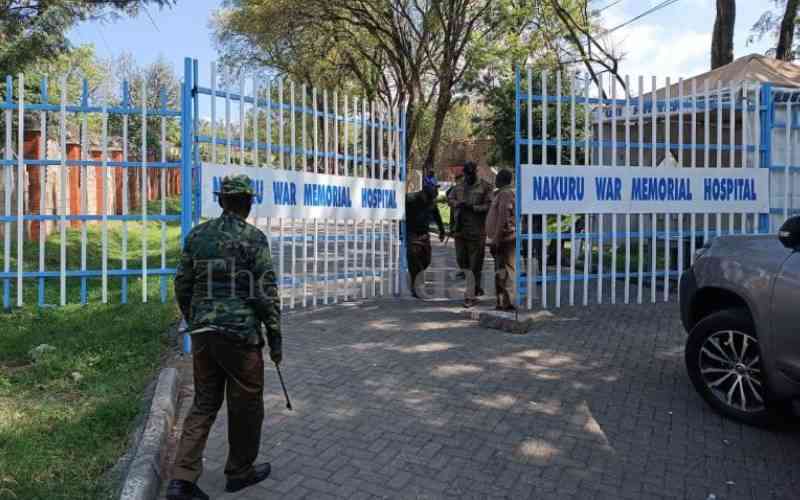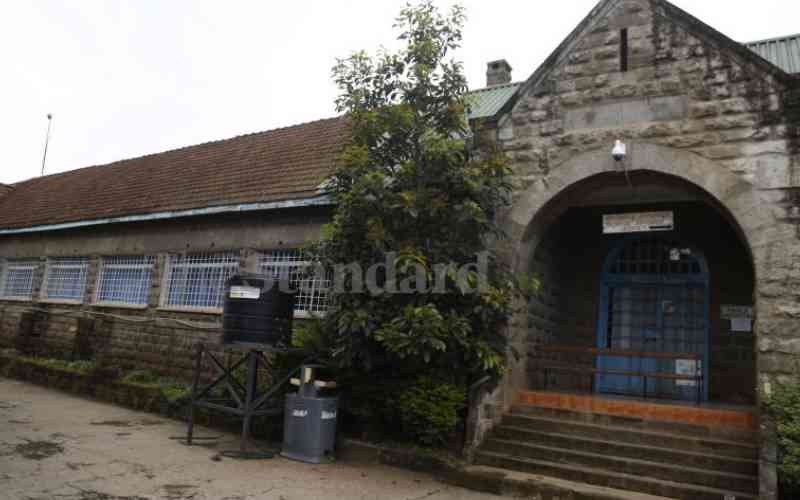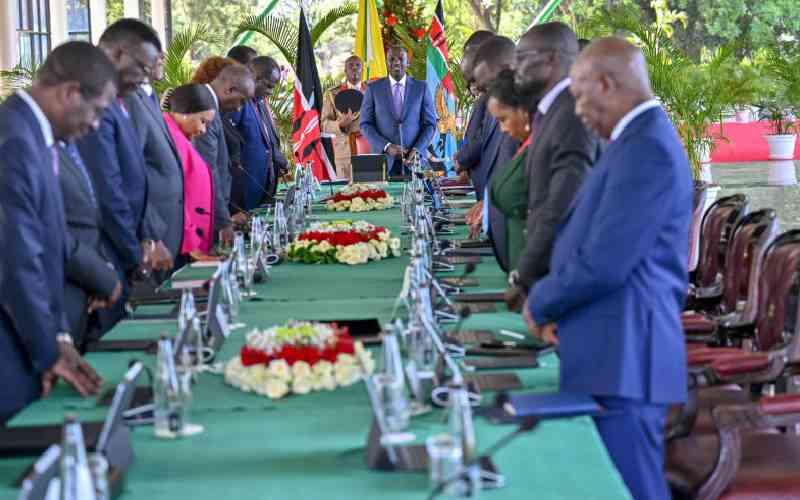
The hospital's first brush with the government was in 1972 when the founding President Mzee Jomo Kenyatta verbally ordered that part of the private facility's building be taken over by the government for the establishment of a public health facility.
However, high-level political intrigues and power games involving some influential government officials and white settlers obstructed the legal process that would have been the government fully taking over the hospital.
Despite the presidential directive, the government did not formalise the annexation. The buildings and the land remain the property of the War Memorial Hospital, which legally owned the title.
A retired civil servant privy to intrigues surrounding the hospital land saga told the Sunday Standard that the European settlers, who were angered by the presidential directive, regrouped and quietly lobbied the then Attorney General Charles Njonjo, who was sympathetic to their plight.
The officer said Sir Michael Blundell and his team of European settlers enjoyed a cordial relationship with the late Njonjo, who also had political scores with some provincial administration officials and politicians in Nakuru.
Records seen by The Sunday Standard show that the hospital's board was chaired by Sir Michael Blundell, who had served as Agriculture Minister in the colonial government (between 1954 and 1955 and later between 1961 to 1962) and had previously served as Minister without portfolio to the Emergency War Council (between 1954 and 1955) during the Mau Mau uprising in the country.
Sir Michael was also the leader of the European settlers in Kenya following his election to the legislative council and had played a pivotal role in the Lancaster Conference talks, which led to the independence of Kenya.
He was the leader of the European members in the council between 1952 and 1954.
Blundell was among the level-headed British settlers whose assistance was sought by the British government to negotiate a middle-ground position with the African leaders, who were demanding the country's independence.
The pre-eminence role he played in bridging the gap between the British settlers and African leaders made Sir Blundell regarded as the "architect of Kenya's racial harmony and stability."
He had, with the permission of Sir Patrick Renison, the colonial governor, met Mzee Jomo Kenyatta in prison to convince him to abandon his militant position against the British settlers in Kenya.
"It is also on the intervention of Sir Michael Blundell that the newly independent state adopted the policy of allowing white farmers who wished to remain in Kenya after independence not to be forced to leave and also those who wanted to leave be allowed to dispose of their land on a willing-seller, willing buyer basis," said the retired state counsel, who wished not to be named for fear that he might be seen as antagonizing the government of the day.
The retired official, who had joined the government as an administrative secretary and was attached to the State Law office, then headed by Njonjo, further said that a petition by a section of Nakuru leaders to have the government take over the hospital was submitted to the then Minister for Health, Isaac Omolo Okero.
The former civil servant further said that the request by the health minister to have the legal separation of the hospital was rejected by Mr Njonjo.
Stay informed. Subscribe to our newsletter
"Mr Njonjo did not give any directive to commence the legal process of annexing the hospital, and that is how Nakuru War Memorial Hospital ended up retaining the title for the whole land, and technically owning the building," the retired officer added.

" By having the government officials in the board, it was meant to have reflected the changed political order as the institution previously appeared elitist and catering for European interests," he narrated.
Available records indicate that the institution, which was established in 1921, was named Nakuru War Memorial Hospital to honour those who died in the First World War (1914-1918).
However, a temporary hospital was opened in June 1919 after the acquisition of the deserted military building, pending the construction of a modern and permanent hospital.
The fund for the construction of the hospital was set up, including the government contribution of Rs 41,000 ( Indian Rupees).
The rest of the contribution was to be realised from close to 50 subscribers, mainly from the settler community who pledged to support the project and made their financial pledges.
According to a public notice issued by A.C. Rose, the secretary to the hospital's management committee, on March 1, 1920, the expenses of running the hospital were to be met by subscribers and contributions by the colonial government.
Before the establishment of the hospital, the Acting Governor had submitted a detailed report to the Secretary of State for the Colonies, Right Honourable Viscount Milner.
The report had been prepared by the Principal Medical Officer, and contained information on the working of the European Memorial Hospital at Nakuru, together with a schedule of fees charged, and a copy of the drawings from the new hospital.
The acting governor pleaded with the Colonial Secretary to provide financial support for the construction of the new facility.
Throughout the colonial period, the hospital catered for the medical needs of the European settlers and continued to serve the elite section of the society upon independence.
Last week, after he was charged with alleged fraud, Dr Mwangi and the other board members said they had experienced difficulties in having the lease renewed as some influential government officials had written a letter to the lands officer about six years ago objecting to the hospital being issued with a new lease.
Mwangi added that previous attempts to have the PGH Annex Hospital pay rent to War Memorial Hospital had been snubbed by both the national government and the county government.
 The Standard Group Plc is a
multi-media organization with investments in media platforms spanning newspaper
print operations, television, radio broadcasting, digital and online services. The
Standard Group is recognized as a leading multi-media house in Kenya with a key
influence in matters of national and international interest.
The Standard Group Plc is a
multi-media organization with investments in media platforms spanning newspaper
print operations, television, radio broadcasting, digital and online services. The
Standard Group is recognized as a leading multi-media house in Kenya with a key
influence in matters of national and international interest.
 The Standard Group Plc is a
multi-media organization with investments in media platforms spanning newspaper
print operations, television, radio broadcasting, digital and online services. The
Standard Group is recognized as a leading multi-media house in Kenya with a key
influence in matters of national and international interest.
The Standard Group Plc is a
multi-media organization with investments in media platforms spanning newspaper
print operations, television, radio broadcasting, digital and online services. The
Standard Group is recognized as a leading multi-media house in Kenya with a key
influence in matters of national and international interest.







